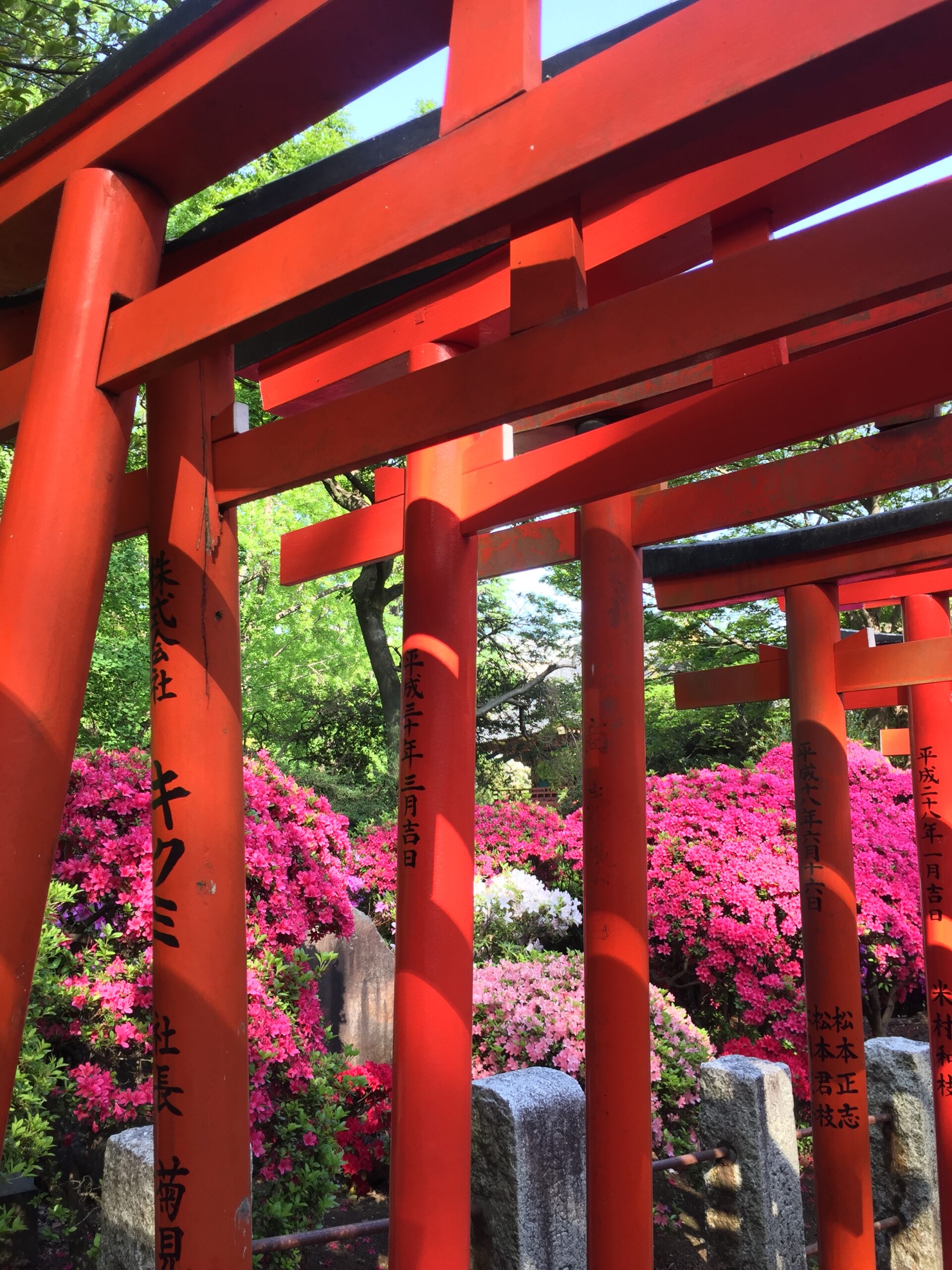For colorful blooming azalea in the spring time, the Nezu shrine in Tokyo is one of the best places to go. But this is not the only reason for putting this sanctuary on your to-see list. The shrine’s buildings are also the oldest shrine constructions in Tokyo. Let’s learn more about this beautiful historical shrine!



Nezu Shrine History
Kyoto is famous for its temples and shrines that are many years old and are preserved almost intact. Tokyo on the other hand, suffered a major bombardment by US forces in 1945, leaving very few long-standing buildings in the city. But not everything was lost.
In the Nezu area, Tokyo, as its name says, is the Nezu Jinja (or Nezu shrine). It is the oldest Shinto shrine in Tokyo, established in 1705. This shrine is dedicated to the god of winds and seas, and having survived the war it is considered a heritage of high cultural importance. Since all its buildings date from the year in which it was established, there are no older shrine constructions in Tokyo.
His Majesty Emperor Meiji, constantly sent petitions to this sanctuary to pray to the gods for his health. The place is designed in the same style as that of the famous Toshogu in Nikko with its imposing buildings. So it is not necessary to travel outside of Tokyo to observe them.
Layout of the Shrine
Upon entering the sanctuary you can see how the entire enclosure is covered by perfectly organized nature, giving the feeling that the complex is a large Japanese garden. Before arriving at the Haiden (front sanctuary) there is a huge door called Romon. This type of door is used both in Shinto shrines and in Buddhist temples.
It has an upper floor that cannot be accessed. A ‘karamon’ (Chinese-style gate) is a type of gate often found in Japanese castles, Buddhist temples, and Shinto shrines. Connected to it there is a ‘sukibei’ (lattice wall), a 200-meter wall that surrounds the main hall.
A similar combination of Karamon and Sukibei can be seen in the Ueno Toshogu. This is another Shinto shrine from the Edo period in Tokyo that is closely associated with the Tokugawa shogunate. Both structures were built in 1706, and both are designated as Important Cultural Properties.
The haiden in the background, the romon door, and the bridge that leads to these shrines form a perfect postcard. Therefore they are some of the biggest attractions of the sanctuary. On the left side, there is a large and beautiful garden with multiple types of flowers. And after a short hike, you can reach a sanctuary in honor of the god Inari, with more than 100 torii in a row to arrive. This little lane feels very similar to the famous Fushimi Inari in Kyoto.
Azalea Flowers at Nezu Shrine
The Nezu Shrine is very famous for its Azalea (Tsutsuji Matsuri) flower festival lasting from April to early May. The whole area is filled with multicolored flowers that give off a delicious aroma. Azalea is a shrub with small leaves, with the edges folded down. They come with white, pink, or red flowers, and are gathered in groups of 2 to 5. This event has been described as the most spectacular view of spring in the city of Tokyo.
The sanctuary enclosure is quite spacious, lots of nature, and very pleasant to walk. The sanctuary has its own lake that passes all around and there live some beautiful koi fish. The koi fish is a sacred animal in Shinto shrines as it is said that the gods reincarnated that way to be closer to humans. The Nezu Shrine is truly beautiful and has endured in time despite all the changes that the city of Tokyo has experienced.
Your Japan Tour
As seasoned Japan experts, we create perfect Japan package tours including destinations like Tokyo and the Nezu shrine. Check out our group tours and private tours, or contact us to start planning your unforgettable holiday to this fascinating country. Japan is full of once-in-a-lifetime experiences, culture, history, nature, and delicious food!

